Photo series
The display wall in the OCT building charts the progress and successes of the “Barrier-Free at ETH Zurich” programme in a series of black and white photos.
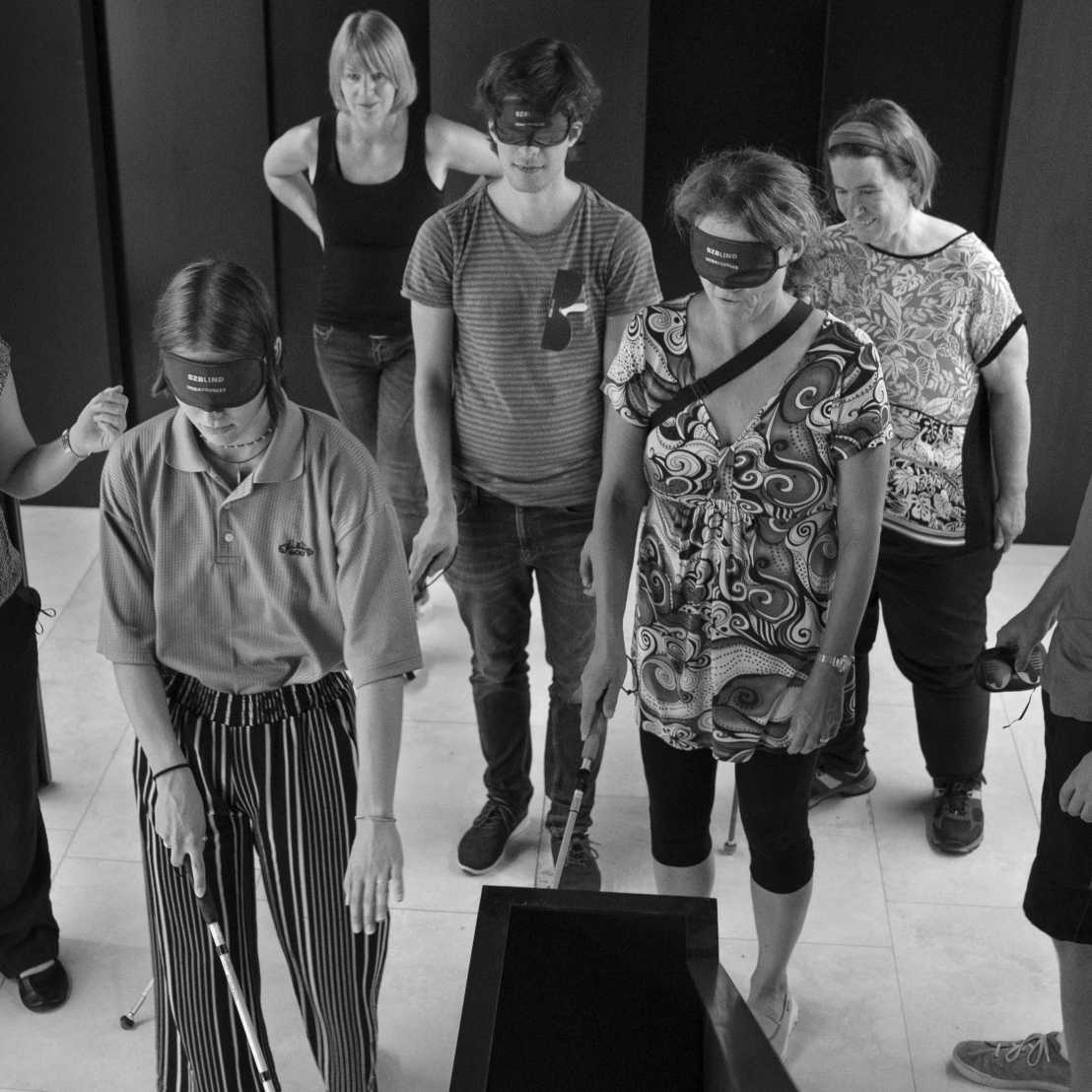
How do I find the seminar room if I have very limited vision?
How do I negotiate the ramps and cobblestones at HPH in a wheelchair?
And how does it feel in general to navigate your way around ETH if you have a disability?
Regular awareness-raising workshops entitled “A Change of Perspective” provide answers to these questions and offer a series of new experiences.
Using a wheelchair or kitted out with a white cane and an eye mask or simulation glasses, interested ETH members can experience the University from a totally new perspective.
“Are barrier-free events possible?”We say – yes!
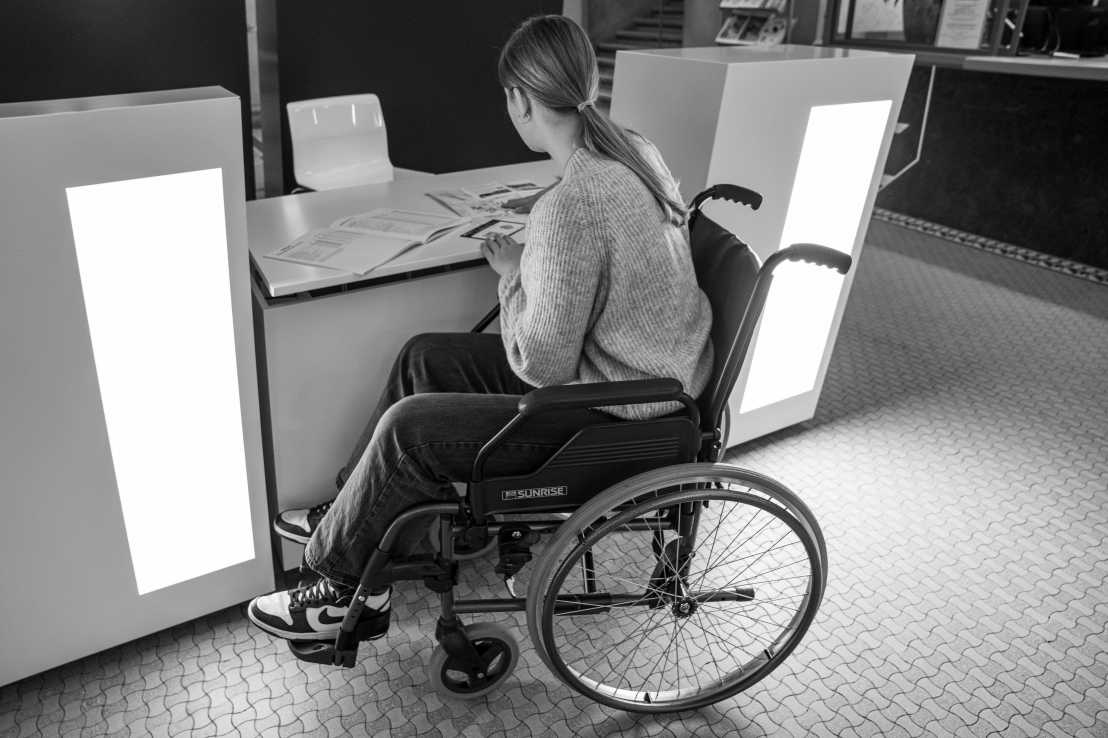
Your department is hosting an interesting panel discussion, but you are deaf? The Executive Board has organised a buffet with bar tables, but you use a wheelchair? A huge number of events take place at ETH Zurich every year. To ensure that everyone can participate fully, it is vital to choose solutions that are as accessible as possible: rooms that can also be reached by wheelchair, for example, and acoustic systems or sign language interpreting for Deaf attendees. The University has already purchased barrier-free registration desks so that people in wheelchairs can be welcomed at eye level.
“Have you heard of "SIA 500"?”SIA 500 is the standard that regulates barrier-free construction in Switzerland.
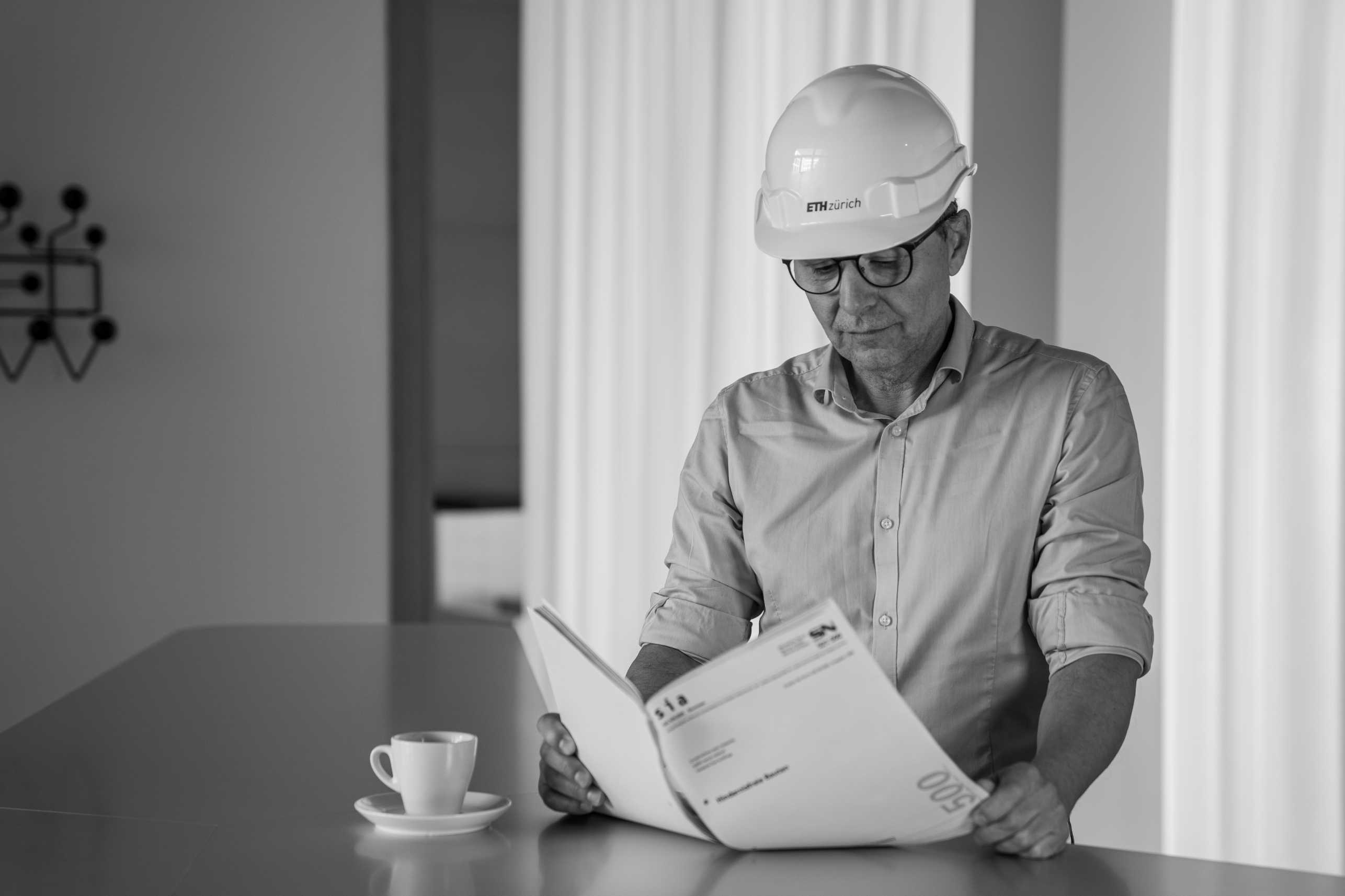
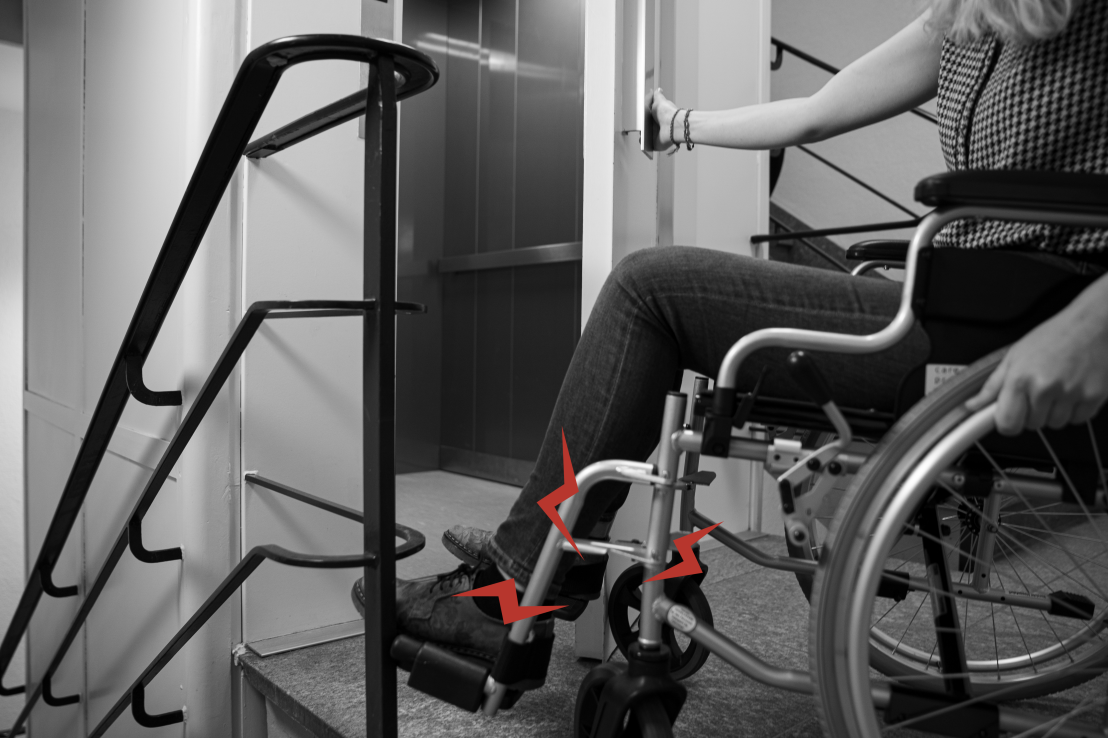
ETH Zurich has a great many buildings, and it is estimated that it will take 15 to 20 years to make them all fully accessible. At present, many buildings and rooms are only partially accessible. To complicate matters, some of the old buildings, such as the main building, designed by Gottfried Semper, are listed. We need to find a mutually acceptable compromise between ensuring accessibility and preserving historic buildings.
As a pilot project, the CHN building on Universitätstrasse is to become the first ETH building to be made barrier-free and equipped with new signage. The work is to be completed by autumn 2023.

ETH is determined to design new buildings according to the principle of “design for all”. Buildings are to be constructed from the outset in such a way that they can, ideally, be used by everyone – regardless of whether they are on crutches, pushing a buggy, using a cane, towing a heavy suitcase or in a wheelchair.
For example, instead of building a staircase and an additional stair lift, the policy now is to build a ramp at the outset. What other “design for all” elements can you think of?
“Which ‘design for all’ elements appeal to you?”Check out the display wall for inspiration.

It is not just “built” obstacles that make it difficult for people with restricted mobility or impaired vision, for example, to navigate their way through the building. Movable obstructions also present difficulties: ramps blocked by furniture, corridors blocked with boxes or illegally locked fire doors can become trip hazards or create dangerous dead ends.
Inspections are therefore carried out every four weeks in high-traffic buildings and every eight weeks in buildings that are less frequented. Movable obstacles are removed and the way is cleared.
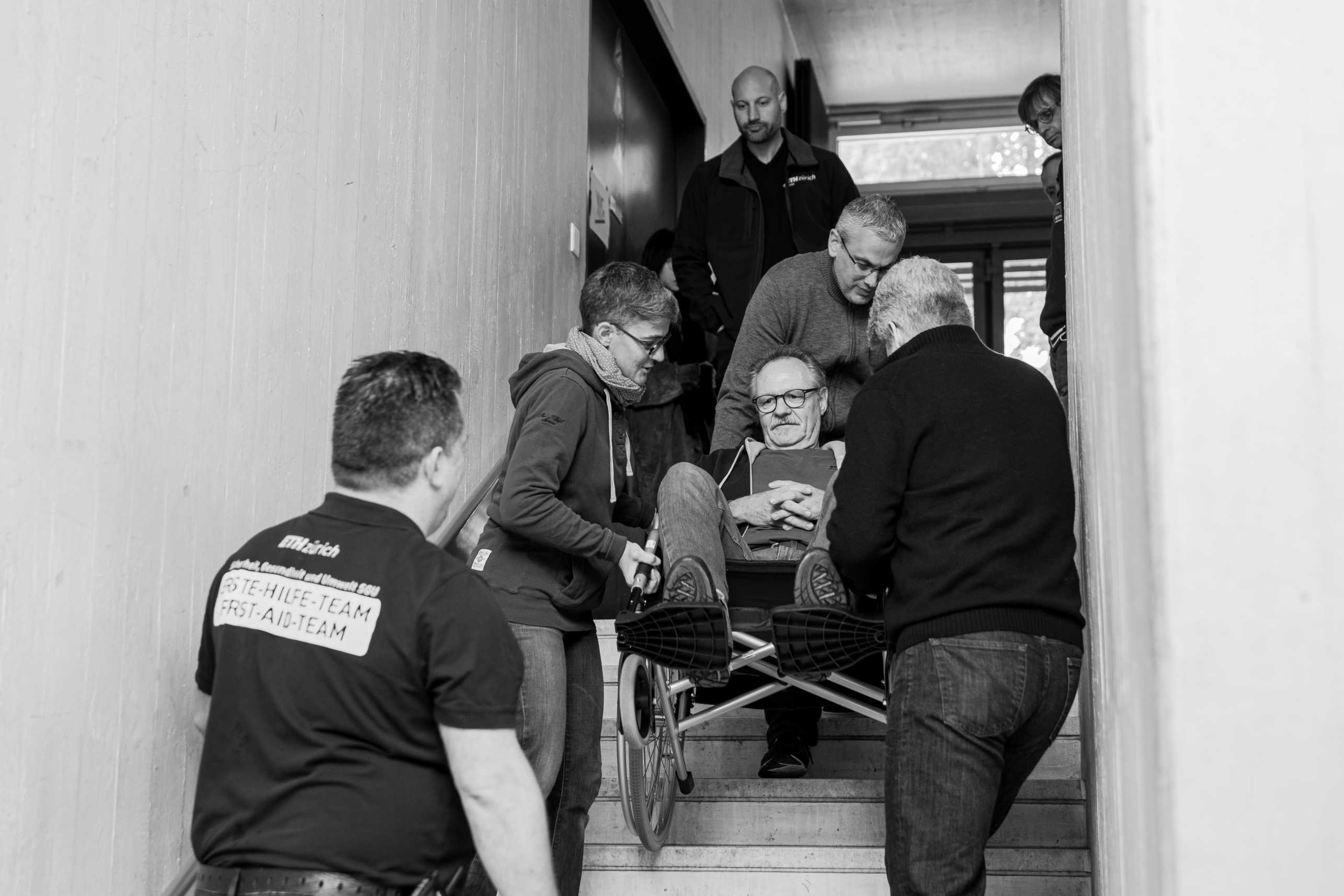

Time is tight, the lecture starts in a few minutes, and you have no idea how to access the room it’s being held in? And you’ve got a heavy suitcase with you, because you’re about to attend a conference abroad or go on holiday?
In future, the new indoor navigation system will reliably show all ETH members and visitors the fastest way to get where they want to be – or the best barrier-free route when required.
“What is an induction loop?”Inductions loops can transmit sound directly to a hearing-impaired listener’s ear via a hearing aid – without any irritating background noise.
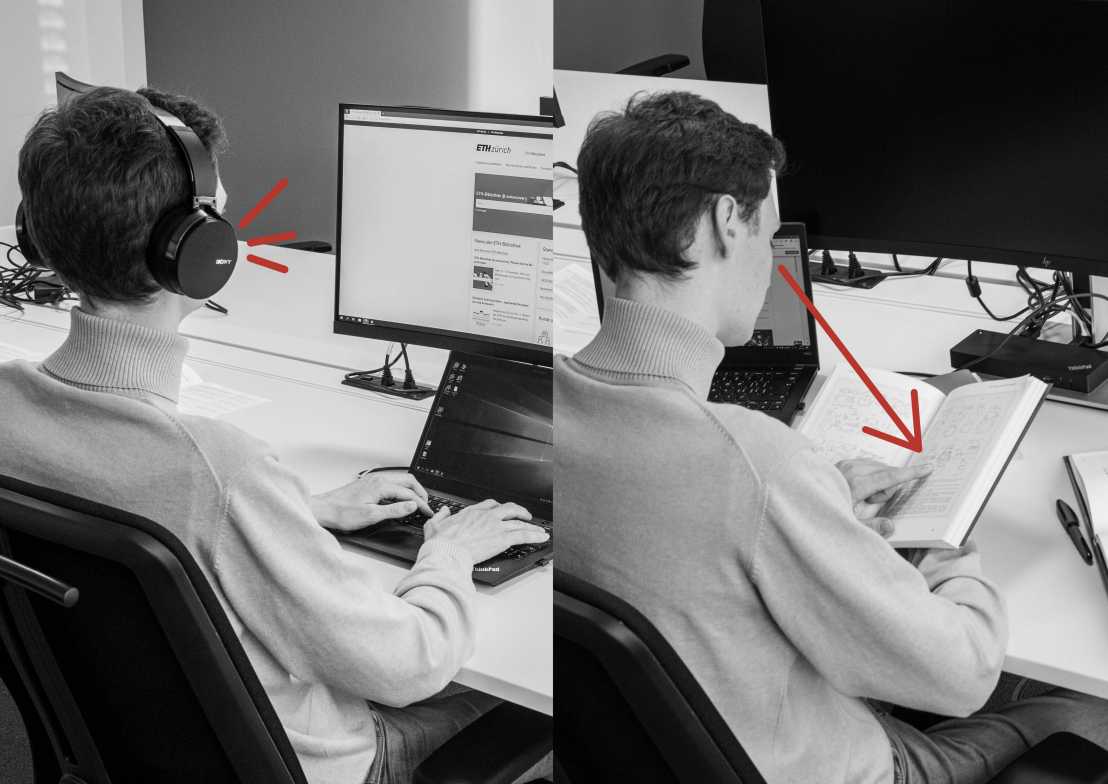
People who have impaired vision can have content read aloud to them by a screen reader. The content must be available in digital form and formatted in an accessible way. However, barriers are often unwittingly built into websites, PDF files, presentations, images or videos: for example, if a photo does not have any alt text (i.e. a short description of the image), if a video does not have subtitles or if the navigational aids are missing in a PDF file, the content will be inaccessible to people with visual or hearing impairments. In order to reach everyone in the future, both Corporate Communications and the Educational Development and Technology department have begun to offer regular courses on topics such as “Digital Accessibility” and “Creating accessible PDFs”.
